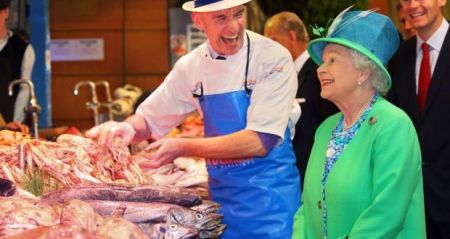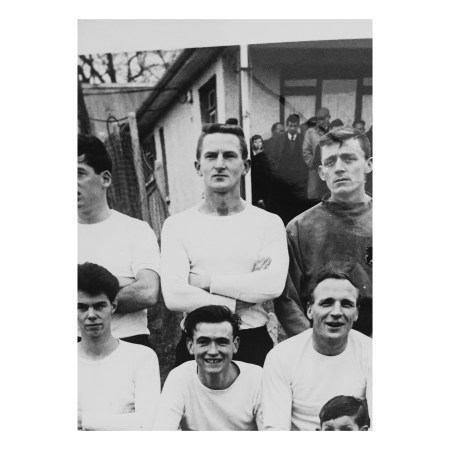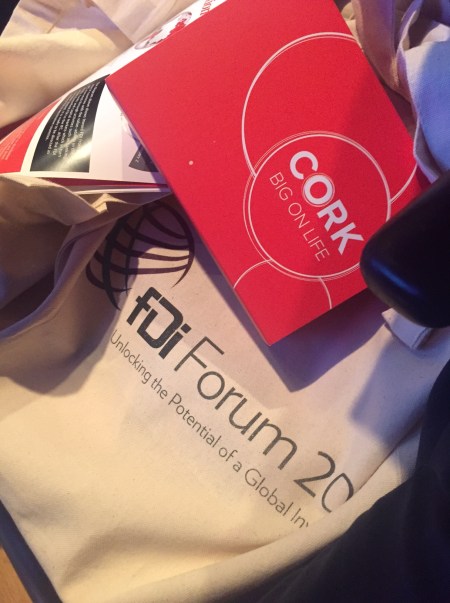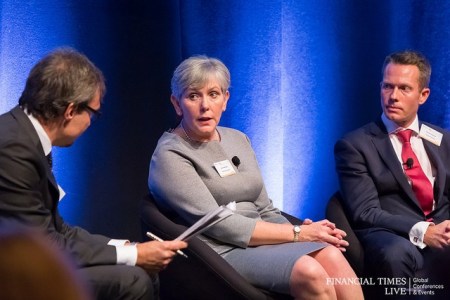This post is about the proposed ‘Coolroe Meadows Active Travel Scheme’ by Cork City Council, with contributions from our friends and neighbours in Greenfields and Coolroe Meadows.
Contributors: Tim Butler, Greg Canty, John Cassidy, Kevin Cooper, Pat Downing, Tom Doyle, Maeve Murphy, James O’Brien, Elish O’Brien, Deirdre O’Mahony & Senan Power
9th August 2022
We would like to start this post with a positive note about Cork City Council:
Proactively promoting safe “Active Travel” should be encouraged and embraced.
However, any careless, desktop plan, that has not been researched properly, that will without doubt lead to huge safety risks for ALL users, as well as leading to congestion and inconvenience should be stopped.
This is not about voicing a concern, or an opinion.
This is about stopping Cork City Council from making a huge mistake and in the process putting people at risk, not to mention wasting money that could be used in so many other, much needed ways.
They won’t appreciate “the noise” that our community in Greenfields and Coolroe Meadows are making now, but in the long run they will hopefully appreciate the efforts that we are making to prevent a serious mistake, as mentioned already.
An Overview
For someone that isn’t familiar with the Greenfields/Coolroe Meadows estate:
Cork City Council want to install cycle lanes on both sides of the road through the estate, complete with bollards and in the process remove key road infrastructure, existing traffic calming measures, some green areas and 23 mature lime trees.
The road through our housing estates, which is much busier than any of us would like, joins the West side of Ballincollig (a few hundred metres up from the White Horse Bar and Restaurant) to Exit 2 of the Link Road.
The road from Coolroe Meadows (the village side) goes through to Greenfields (with a landscaped roundabout joining the two estates) and exits on either the Link Road, a poor back road to Ballincollig and another poor country road that leads to Killumney and beyond.
With the nature of this road it is a thoroughfare for cars, trucks and motorbikes, but not for bicycles, except for (in the main) any cyclists from the estate itself.
This might seem unusual, but when you consider where the road leads (at Greenfields side), being practical (and safe) very few bicycles will go or come from outside the estate.
The need..
If there was a huge need for this cycling infrastructure the residents would welcome it with open arms.
There is not.
Cork City Council is trying to solve a problem that does not exist and in the process cause unnecessary problems that carry with them serious safety risks.
Many of the residents have been living on the estate for over 20 years and there has never been a problem. It is well laid out and there have been no incidents that any of us can recall.
We all welcomed the two electronic happy/sad face speed signs that have been successful in getting people to adhere to the 50km speed limit, which works well.
The Process
As well as the actual subject matter there were numerous flaws with the “consultation” process that was executed by Cork City Council for the Coolroe Meadows Active Travel Scheme.
Incorrect naming of the scheme
The title of the scheme is incredibly and carelessly misleading: ‘Coolroe Meadows Active Travel Scheme’.
Coolroe Meadows is one part of the housing estate, there is no mention of Greenfields, which is the other part.
Maybe, this was a careless oversight or it could be viewed by some as a deliberate act to mislead and not draw attention to the subject matter.
We know that many of the residents of the Greenfields half of the development glanced at the incorrectly named development and concluded that it had nothing to do with them.
If anything, the whole estate is often referred to as “Greenfields” by all residents.
Timing of the notice
The timing of the notice (issued 1st July, closes 2nd August) clearly coincides with peak holiday times for many people, which could be seen as quite a deliberate act, and certainly not one with the intention of informing all residents of the proposed development.
Quite a few residents are still completely unaware of this matter and many more require a fair and reasonable amount of time to be able to study this issue and be allowed to make a submission if they wish to do so.
Many of the residents who had “spotted” the notice and realising the dangerous consequences of it, resorted to calling door to door to alert their neighbours about the scheme.
We produced our own literature at short notice, which was delivered to every house in the estate and we also erected signs throughout the estate to inform residents about the scheme.
It was clear from this process that many people were on annual leave.
Website
The website for making submissions is not fit for purpose and in our view it discourages people from making a submission.
- The submission portal crashes continuously and this was experienced by many residents that we spoke to
- Requiring people to register and create a password in an age of GDPR is quite off putting
- When people were making a submission, the website was reporting that there were zero submissions: most people felt that they were the only one making a submission, which made them feel that “they were the only ones” with an issue
- The website quoted a 4pm deadline on the 2nd August for submissions while the accompanying literature quoted 5pm
As with everything else to do with this scheme, it was careless and certainly not fit for the purpose of allowing people to make submissions easily.
We are concerned that this will lead to a large amount of unsuccessful submissions.
Flagged
These issues were flagged with Councillor (and resident of the estate), Garret Kelleher who informed our group that any delay to the process would not be allowed by Cork City Council. Another Councillor Colm Kelleher made a similar request to the Council and was also refused.
Andrias Moynihan TD, later informed the group that there would be an extension, but only a postal one.
There was no advertisement to tell people in the estate that this deadline was extended and we learned that councillors who had requested an extension only heard that a postal one was granted through third party social media accounts.
The Proposal.
The proposal includes:
- The removal of existing pedestrian crossings (with one poorly located replacement)
- The removal of seven turn lanes (to individual housing estates)
- The removal of medians
- The removal of an existing roundabout
- The removal of 23 mature lime trees
The proposal includes the installation of:
- Cycle lanes on the road in each direction
- Bollards to enclose the cycle lanes
- Ramps at entrances to estates
The proposal does not take into account:
- Provision for the school buses
In the section below we will take each of these issues in turn and explain carefully why there is a serious issue with what has been proposed by the planning department of Cork City Council.
Removal of existing pedestrian crossings
Currently, there are five pedestrian crossings along the Coolroe Meadows/Greenfields road.
These were developed to allow children to safely meet friends in other areas in the estates off the road and are also used by walkers who utilise the estates for recreational exercise, particularly in the evenings and at weekends.
These have worked perfectly for over 20 years and to the best of our collective knowledge there have been no accidents or issues.
It is user friendly and it works perfectly providing opportunities to cross safely in a number of locations.
Best practice – research has recommended that pedestrian crossings should be placed 80 to 100 metres apart in an urban setting, and that distances over 200 metres should be avoided.
The road is about 875 metres long so the two crossings in the proposal will be 400 metres apart on average. As well as being too far apart, neither of the two pedestrian crossings that are proposed are in the Coolroe Meadows section of this road and children use play areas on both sides of the road.
A person in Coolroe Meadows will not walk to Greenfields to cross the road. Once again, this plan was not thought out.
This proposal to reduce the five pedestrian crossings to two will increase the likelihood of pedestrians being struck along this stretch of road. Where pedestrian crossings are too far apart or where they do not facilitate the natural flow of people, pedestrians will decide to cross in a more direct, unprotected route.
Putting pedestrians at risk like this is careless in the extreme, and quite a backward step.
The removal of seven turn lanes
Turn lanes provide additional physical separation between turning traffic that is slowing or stopped as well as traffic flowing in the opposite direction. Turn lanes have been shown to reduce crashes in many countries.
Essentially, the Coolroe Meadows-Greenfields road was developed as an estate road with many branches which became a major access road to Ballincollig due to the development of the Ballincollig By-Pass.
The seven turn lanes reduce the chances of rear-end or sideswipe crashes along the road.
Cork City Council’s proposal to eliminate the turn lanes will increase the likelihood of rear-end crashes, stall traffic flow and cause traffic jams. Cork City Council have not made any attempt at assessing the likely impact of their proposal on road safety in their report.
Removal of road medians
The road medians work well with the lead up to turn lanes as well as separating traffic in each direction throughout the estate. This becomes very important at the pedestrian crossings, making these safer for those crossing the road.
The road medians also allow traffic some extra space if this is required to pull past a cyclist, to pull around a parked school bus, or in the event of an emergency vehicle, to allow extra space for them to easily pass by existing traffic on the road,
Effectively these provide extra road space should it be required and in doing so they make the road safer for all users.
The removal of the roundabout
The Greenfields roundabout at the centre of the estate facilitates a busy traffic pressure point, allowing traffic to easily and safely join the road from the housing estates at either side of the road.
The roundabout is very effective at slowing down traffic coming through the estate, allowing residents to safely join the road. The approaches to the roundabout incorporate a path, which also allows pedestrians to cross safely at this point.
The removal of this roundabout would allow all traffic to pass through the estate quicker, putting all users at risk, as well as removing the existing opportunity for pedestrians to cross the road.
The replacing of the roundabout with a busy four arm junction is an extremely backward step, it is introducing a huge safety risk for all users, as well as huge inconvenience for all road users trying to exit or enter the estates at either side.
We refer to a European Commission Road Safety Report about junctions and roundabouts as follows:
[Junctions, at-grade or grade separated, are locations of high accident concentration. In most countries 40 – 60% of the total number of accidents occurs at junctions. Consequently, special attention should be given in determining the type, the shape of junctions, as well as the number of junctions along a road axis and the efficient design of each one.
The main objective of junction design is to increase convenience, comfort and safety while at the same time enhancing the efficient movement of all road users (motor vehicles, buses, trucks, bicycles, and pedestrians).
Junctions are intended to operate where vehicles often must share space with other vehicles and pedestrians. Negotiating a junction requires many simultaneous or closely spaced decisions, such as selection of the proper lane; manoeuvring to get into the proper position; need to decelerate, stop, or accelerate; and need to select a safe gap.
An important safety aim is to match the speed at which drivers negotiate the junction with the complexity of the decisions to be made. This can be done, for example, by only allowing simple merging manoeuvres on high speed roads or by ensuring that drivers reduce speed on the junction approach (e.g. by deflection of path through a roundabout). Sight lines should provide drivers with sufficient information to make safe decisions, but not tempt them to try to select short gaps in conflicting traffic flows]
The report specifically mentions left turns (in an Irish context this would be right turns)
[It should be noted that left (right) turns are high risk movements on a level junction. Research results in Great Britain have shown that these movements (right turns in Great Britain) are responsible for around 70% of all accidents on three-arm junctions]
Please note that what is being proposed is an even more dangerous four arm junction.
The report proposes that in situations like this, a roundabout is a perfect solution that reduces risk:
[Converting junctions to roundabouts can improve safety and traffic flow.
Roundabouts can contribute to road safety in the following ways:
- Conflict points between the traffic streams are theoretically reduced
- Roads users entering the roundabout have to yield to road users already in the roundabout, thus they are forced to observe traffic at the roundabout more carefully
- All traffic comes from one direction
- Left (right) turns are eliminated
- Speeds are reduced, as drivers have to drive around a traffic island located in the middle of a junction
Roundabouts reduce the number of injury accidents depending on the number of arms and the previous form of traffic control. There appears to be a larger effect in junctions that used to have yield control than in junctions that used to be traffic controlled. Fatal accidents and serious injury accidents are reduced more than slight injury accidents]
Intuitively and from experience of the estate, we know that the roundabout was well designed taking into account the residents as well as the traffic passing through.
What has been recommended goes against all best practice – it is introducing a proven safety risk to replace a proven safety solution and it must be stopped.
The removal of 23 mature lime trees
There are 50 mature lime trees lining either side of the main road through Coolroe Meadows (from R608 to the roundabout at entrance to Greenfields) (48 limes on the west and 50 on the east side plus a few new recently planted ones, so ~100). Each tree is 7-9 m tall. They have circumferences of 50-90 cm at breast height and all are about 25 years old.
Ecological importance – These lime trees play an important ecological role in our urban estate. Lime leaves are eaten by the caterpillars of many moth species, including the lime hawk, peppered, vapourer moths which are found in the estate. These moths are in turn food for bats which are protected species. Lime trees are also host to very large numbers of aphids which extract sugar from the leaves. The aphids then excrete a dilute sugar solution as a liquid waste which honey bees drink (so important for local honey growers). The aphids are a source of food for many animals including other insects and birds (long tail tits are regularly seen feeding on the trees). Thousands of ants move up and down each tree trunk every day to milk the aphids and protect them from predators. These ants are also food for birds.
Importance as a carbon sink – A lime tree of 9 m height and diameter of 26.5 cm has a total carbon biomass of 0.86 tonnes (including underground roots). As they are mature they will continue to sequester carbon dioxide from the atmosphere at much greater rate than any new young trees that are planted e.g. it will take ~50 young trees to grow for 1 year to capture the amount of carbon in one of these mature lime trees! The removal of 23 mature lime trees will potentially see all this carbon released back into the atmosphere as they break down.
Aesthetic and health effects – The 100 lime trees are visually very impressive as you walk or drive down through Coolroe and now these mature trees are an integral part of our civic space. But beyond the visual, many studies have now shown that even short-term exposure to urban green spaces (such as our road of lime trees) can reduce stress, increase positive emotions and mood, and increase mental and physical health. Even a quick survey any evening will show hundreds of people walking or running along past these trees. There is no doubt that Coolroe Meadows/ Greenfields estate is a place where people choose to exercise for improved mental and health reasons.
The introduction of “road” cycle lanes
The proposed road cycle lanes are just 1.5m in width.
The left 0.4m has drains which cyclists will need to avoid
If bollards are used (as part of the proposal), it would further reduce the usable space to the cyclist’s right as they would need to avoid contact with them. This would equate to approx 0.4 of further unusable space.
This leaves a safe width of only 0.7m, a typical cyclist cannot maintain this position so precisely.
If a parent is cycling with a child, it will likely result in the child in the cycle lane and the parent cycling in the car lane beside them.
If bollards are used it will also lead to dirt piling up in the cycle lane, as we can see wherever these are in place. The road sweeper will not be able to clean inside the bollards, which is already an issue outside Colaiste Choilm school in Ballincollig.
The dirt will become dangerous when wet and will further encourage cyclists to use the road.
As experienced cyclists will tell you, a bad cycle lane is worse than no cycle lane.
Bollards as part of the cycle land infrastructure
We have already outlined the issues with bollards and why they are not a solution.
There are three further issues with bollards as part of this plan:
- They prevent cars from pulling in for emergency vehicles (this is already an issue in the centre of Ballincollig)
- They prevent school buses from parking to collect and drop off children
- They are unsightly and are not appropriate in a residential setting
Introduction of ramps at the entrances to each estate
There is no need for any such interference with the roads in the estate, which functions quite well currently.
The faster moving traffic due to the removal of the roundabout, the removal of turn lanes and medians and the introduction of ramps, are collectively and disproportionately punishing the residents of the estate in favour of through traffic.
Entering and exiting their estates will be more difficult and will lead to increased risk taking, adding even more risk to this already poor plan.
Provision for a bus stop
There are school buses that stop between the entrances of the Fernwalk and Woodberry estates near the Greenfields roundabout.
This serves as a collection point for children living locally, many of whom are dropped off by adults arriving in cars and parking nearby. The existing median, which the proposal would remove, has allowed passing cars to pass a stopped bus.
The plan takes no account of this, confirming the lack of basic research that went into this plan.
General safety
During the course of over twenty years the estate has thankfully had an exemplary safety record, with no serious (or even minor) accidents that we can think of.
If there were genuine safety concerns the residents of Coolroe Meadows/Greenfields would be the very first to clamour for relevant improvements.
Existing cycles usage
As already explained the cyclists using the road network in the estate will predominantly be residents.
Of those surveyed adult cyclists use the road and will mainly use it to exit or enter the estate on the Coolroe Meadows side.
Cycle traffic is minimal and cyclists report that there are no issues, with the medians allowing for cars to safely pass, if the need arises.
Younger cyclists will mainly use the wide, low density footpaths on the estate, and in all likelihood will not exit from the estate onto the busier roads.
False Statements in the Proposed Plan
We wish to refer to a number of points in the Environmental Impact Assessment Screening Report
Risk of accidents:
In relation to the risk of accidents the report states:
“As the development involves the upgrading of services, the risk of accidents should be reduced”
This statement is incorrect – Services have been downgraded, which increases rather than reducing risks as we have carefully outlined above.
The report states that the project “is unlikely to have a significant impact on the landscape of the area”
The removal of mature lime trees, grass verges, a beautifully landscaped roundabout and the introduction of plastic bollards will have a huge, and very unnecessary impact on the landscape, as well as damaging the environment and carbon footprint.
Summary
The Cork city Council ‘Coolroe Meadows Active Travel Scheme’ as proposed, is a careless desktop plan that was prepared with no proper research and one that goes against all best practice and road for road safety guidelines..
The plan is a poor attempt at solving a problem that does not exist, and in doing so it would not only destroy a well planned and well functioning road layout, but it would introduce significant safety risks for all users.
As well as being an extremely poor plan, there were also significant issues in the naming of the plan, the timing of the consultation and the IT systems to support the processing of submissions.
On behalf of the concerned residents of Coolroe Meadows and Greenfields we wish to state that it is our clear objective to reject this plan, and in doing so to prevent Cork City Council from making a serious mistake that will put ALL road users at risk.
Councillors
We are calling on all councillors to meet with us and represent our interests in this matter.
We are inviting councillors at their convenience to meet with a representative of the estate before the 24th August and walk the estate to fully understand the serious safety consequences of the proposed plan.
We have also invited councillors to attend a meeting of residents on the 24th August at Oriel House Hotel at 8pm.
Cork City Council Planning Department
We have also invited the planning department to attend the meeting on the 24th to listen to our serious concerns.
Contact Us
For queries or suggestions please email:
Updates
We will update you with any extra information on this blog post including meetings and updates for Councillors and Planners.






















